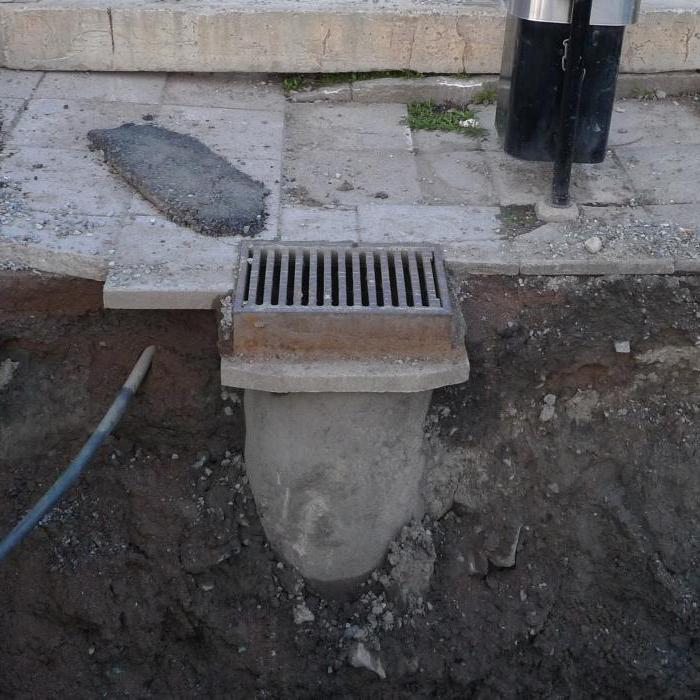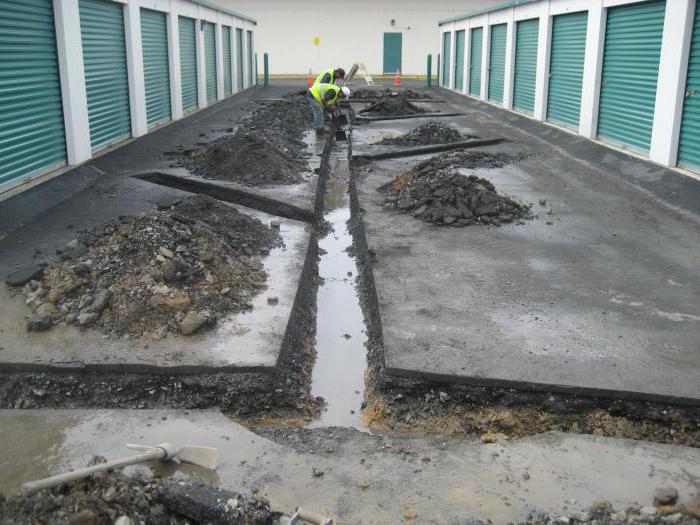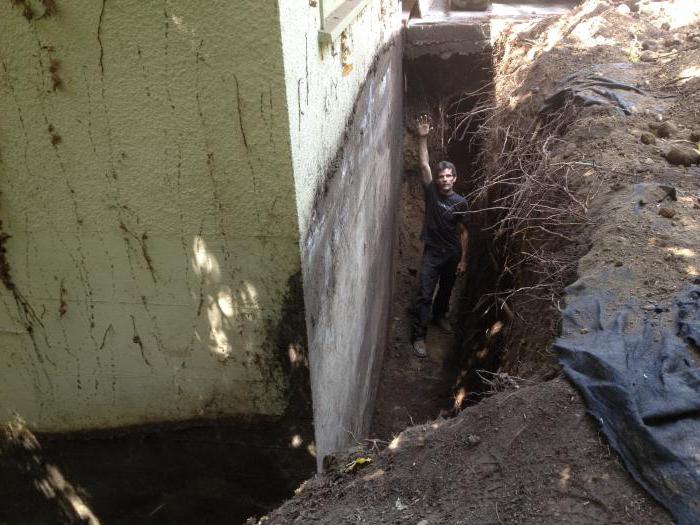Today, they are used in almost every personal plot, as well as on the territory of private houses. The complexity of the work on the arrangement of the system will be influenced not only by the height of the groundwater, but also by the degree of slope of the site, as well as the terrain. Drainage pipes for draining water from the site are designed to protect technical undergrounds, basements, as well as other parts of the house from flooding, which can be caused by groundwater, surface runoff and precipitation. If drains are laid in trenches along the perimeter of the building, then you can ensure the drainage of water from the object, eliminating the appearance of dampness and mold, as well as premature destruction of structures.
When is drainage needed?
Drainage pipes for draining groundwater may be needed under different conditions, mainly this need is dictated by the characteristics of the land. But in some other cases, work on the arrangement of drainage systems is shown. This includes the location of some parts of the house below the estimated level of groundwater. The arrangement of such a system may be necessary when the basements are located at a height that does not exceed 0.5 meters from the calculated level of groundwater. This includes the arrangement of buried rooms on loamy and clayey soils, while the presence of groundwater does not matter.
In order to prevent flooding of the territory and limit the flow of liquid to residential buildings and outbuildings, a drainage system is being built near the foundation, which is complemented by a blind area with a slope of 2 percent, while its width should be one meter along the perimeter of the object. After the drainage pipes for the removal of groundwater are laid, a high-quality soil compaction should be made when backfilling the trench. Waterproofing must be applied to the part of the building that is in contact with the soil. This need does not depend on the absence or presence of foundation drainage. If the house is built on sandy soil, which quite easily passes water into the underlying layers of the soil, wall drainage is not equipped. In this case, the soil should not freeze deeper than 80 centimeters.
Ways to divert water from the foundation

If you want to lay drainage pipes for draining groundwater, you should first familiarize yourself with the basic technologies for arranging such structures. Thus, there is a closed type drainage, which is a trench with sand and gravel. Grooves are dug in the ground, which are filled with sand and gravel in the listed sequence. In order to achieve a more positive effect, trenches can be arranged in the form of a Christmas tree, the central one of which must be made with a slope directed towards the discharge of water. The distance between the drains should be determined taking into account the composition of the soil. If we are talking about clay soils, then this parameter does not exceed 10 meters, for loamy soils this figure is 20 meters, while for sandy soils - 50 meters.
open drainage
![]()
This type of drainage is the simplest and cheapest to implement. In the process of work, it is necessary to equip the grooves, the width of which is 0.5 meters. In this case, it will be necessary to go deeper by 70 centimeters. Digging of grooves is carried out along the perimeter of the site, the sides in the drains should be beveled at an angle of 30 degrees. Water from this system will go into a common gutter. If you decide to use this technology when drainage pipes are being laid to drain groundwater, it is recommended to consider the photos in advance, they will allow you to understand that the main disadvantage of such a system is an unattractive appearance that spoils the landscape of the site.
perforated pipeline

Another way to divert water from the foundation is a design using a perforated pipeline. This technology is the most popular. The drainage will be deep and is intended for the removal of high-lying groundwater. Asbestos-cement or ceramic pipes are laid in the soil, in which holes are pre-drilled. A more modern option is perforated plastic or ready-to-install drainage systems. The latter you can find on sale.
An alternative solution for draining water from the foundation: drainage trays
![]()
If it is necessary to remove atmospheric precipitation from the house, drainage trays can be used, for the arrangement of which plastic or modified concrete products should be used. The trenches will run from the intakes to the discharge site, and it is important to provide a slight slope, which varies from 2 to 3 degrees. The elements are installed in pre-prepared small grooves, the sides of which should be flush with the soil surface. From above trays are closed by decorative lattices. If the house is on a hill, then open grooves can be formed across the slope, this will ensure the interception of water that flows from above.
Varieties of drainage pipes

Before choosing drainage pipes for draining groundwater, the GOST of which will guarantee quality, you should understand their varieties. For example, HDPE pipes are made in accordance with GOST 16338-85. When choosing the material for drains, which are perforated pipes, you should be guided by their depth and the aggressiveness of groundwater. Plastic pipes, which can be made of polyvinyl chloride, low-pressure polyethylene, high-density polyethylene and polypropylene, are especially popular today. The most popular are plastic drains, which are the easiest to lay and deliver to the site. Considering the varieties of such products, one should highlight the presence or absence of perforation, as well as the purpose for a specific depth of laying.
Classification of drainage pipes by purpose
![]()
If you are considering drainage pipes for draining groundwater, the photos of which are presented in the article, then first of all you need to know that they are divided by area of use. For example, a double-sided pipe has increased strength characteristics, therefore it is applicable for deep laying in the ground. There are products with a filter that are designed for those places where it is possible to clog the system with small particles and silt the structure. Drainage pipes of large diameter are used in cases where there is a need to divert large volumes of water. When arranging systems, in some cases there is a need to wrap elements in geotextiles. Considering the types of drainage pipes for draining groundwater, you will find products that are already supplied with geotextiles, and such elements can be laid to a depth of up to 3 meters. Technological progress does not stand still, on sale today you can find pipes with a filter made of coconut fiber, which allow you to achieve a positive result.
Characteristics of Wavin drainage pipes
When choosing components for the foundation moisture protection system, you may prefer Wavin drainage pipes for groundwater. They are available in three varieties: without filter, with a synthetic fiber filter and with a natural coconut fiber filter. The elements are flexible and reliable, so they are easy to install without fear of damage. They can become part of curved trenches and systems with complex design features. This reduces the number of fittings during installation.
When purchasing coils of pipes, at the ends you can see couplings that allow you to connect the elements to each other without using additional tools and consumables. Such drainage pipes for draining water from the house allow you to save money, because you do not have to spend extra money.
Recommendations for arranging a system for draining water from the foundation
Wall drainage is laid from the outside of the building along its contour. The distance between the drainage pipe and the wall will depend on the design width of the base and the location of the manholes. Wall drainage should not be laid below the foundation slab or the sole of the tape base. If the foundation structure is located at an impressive depth, then the drainage can be laid above the sole, but only if measures are taken to prevent subsidence of the elements of the drainage system. When drainage pipes are laid to drain water, you can save on sand. For this, it is recommended to use geocomposite materials, which include plastic profiled membranes glued with geotextile. The membranes will protect the base of the building from moisture and well drain the liquid to the perforated pipes due to the unique surface. The geotextile filter will allow water to pass through, excluding the passage of particles of the drained soil.
Pipe laying
It is necessary to start work by digging a trench, its width should be equal to the diameter of the pipeline from the outside, 40 centimeters should be added to this value. In cross section, the trench may have a rectangular or trapezoidal shape; at the bottom there should be no foreign objects such as hard lumps, large stones or bricks, which during operation can damage the bottom wall of the pipe. Initially, a layer of sand is poured to the bottom, followed by a layer of rubble. The upper part of the pipe should be covered with crushed stone backfill, the height of which will be 20 centimeters. After a layer of sand is laid again, the outer part of the soil is covered with turf. It is important to observe the sequence of layers. When drainage pipes are laid to drain water, photos of which you can see in the article, sand must be laid first. The filter is designed to prevent soil particles and fine gravel from entering the drainage pipe, otherwise the drainage holes will quickly become clogged and the system will require cleaning.
For drainage maintenance, it is necessary to install on straight sections that are 50 meters apart from each other. They should be in places of turns, changes in angles of inclination and intersections of the pipe. The most popular way of laying elements for drainage is the shape of a Christmas tree, each of the branches of which will go into a large pipe of a collector for drain. Ground water through the collector pipe will go by gravity into a roadside ditch, or reservoir. If the place of water discharge is located below the level of the site, then it is important to mount from which the water will be removed using a pump.